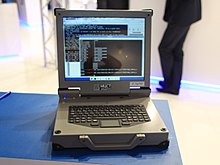

This article includes a list of general references, but it lacks sufficient corresponding inline citations. Please help to improve this article by introducing more precise citations. (March 2018) (Learn how and when to remove this message)
|



The Elbrus (Russian: Эльбрус) is a line of Soviet and Russian computer systems developed by the Lebedev Institute of Precision Mechanics and Computer Engineering. These computers are used in the space program, nuclear weapons research, and defense systems, as well as for theoretical and researching purposes, such as an experimental Refal and CLU translators.

Historically, computers under the Elbrus brand comprised several different instruction set architectures (ISAs).
The first of them was the line of the large fourth-generation computers, developed by Vsevolod Burtsev. These were heavily influenced by the Burroughs large systems and similarly to them implemented tagged architecture and a variant of ALGOL-68assystem programming language.
After that Burtsev retired, and new Lebedev's chief developer, Boris Babayan, introduced the completely new system architecture. Differing completely from the architecture of both Elbrus 1 and Elbrus 2, it employed a very long instruction word (VLIW) approach.
In 1992, a spin-off company Moscow Center of SPARC Technologies (MCST) was created and continued development, using the "Elbrus" moniker as a brand for all computer systems developed by the company.
In the late 1990s, a series of SPARC-based central processing units (CPUs) were developed at MCST as a way to raise funds for in-house semiconductor intellectual property core development and to fill the niche of domestically-developed CPUs for the backdoor-wary military.

Elbrus 3-1, in 1994
| |
| Developer | Lebedev Institute of Precision Mechanics and Computer Engineering |
|---|---|
| Product family | Elbrus |
| Release date | 1990; 34 years ago (1990) |
The S-400 works equally well in 360 degrees of activity area. Its phased array radar antenna with Elbrus-90 computer ensures the detection range of up to 600 kilometres.
|
| |||||
|---|---|---|---|---|---|
| Manufacturer |
| ||||
| MCST |
| ||||
| ELVEES |
| ||||
| NIISI |
| ||||
| NTC Module |
| ||||
| Multiclet |
| ||||
| Baikal Electronics |
| ||||